Table of Contents |
Given the graph of  recall the following for a positive value of k :
recall the following for a positive value of k :
 shifts the graph of
shifts the graph of  to the right k units.
to the right k units.  shifts the graph of
shifts the graph of  to the left k units.
to the left k units. EXAMPLE
Consider the functions and
and  Since
Since  it follows that the graph of
it follows that the graph of  is obtained by shifting the graph of
is obtained by shifting the graph of  to the right by 2 units. Their graphs are shown below.
to the right by 2 units. Their graphs are shown below.
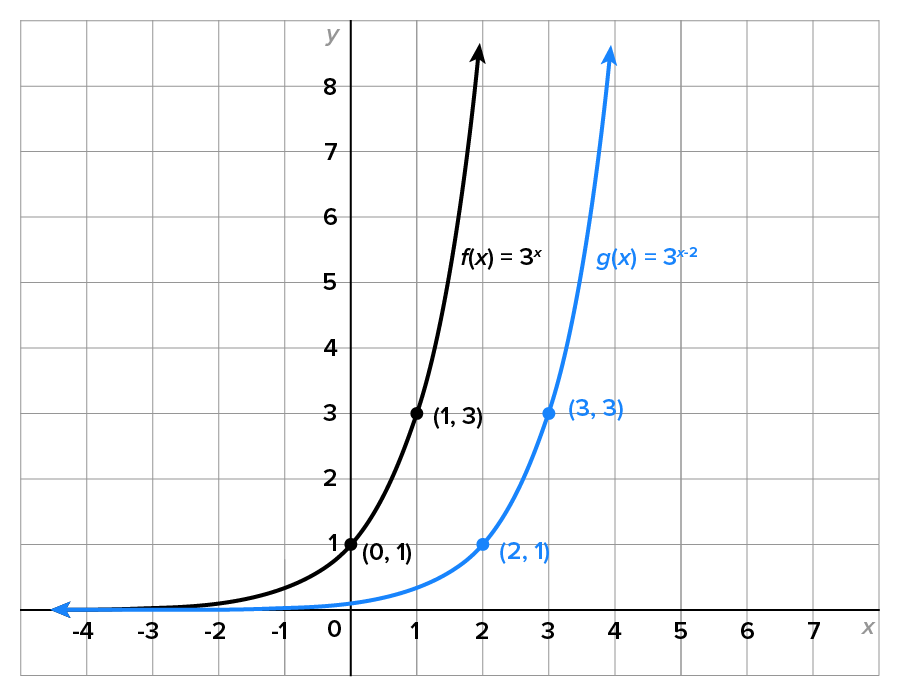
 and the range of f is
and the range of f is  It turns out that the domain of g is
It turns out that the domain of g is  and the range of g is
and the range of g is  In general, shifting the graph of a function horizontally does not alter the domain or range of f.
In general, shifting the graph of a function horizontally does not alter the domain or range of f.
 and
and 
Given the graph of  recall the following for a positive value of k :
recall the following for a positive value of k :
 shifts the graph of
shifts the graph of  up k units.
up k units.  shifts the graph of
shifts the graph of  down k units.
down k units. EXAMPLE
Consider the functions and
and  Since
Since  it follows that the graph of
it follows that the graph of  is obtained by shifting the graph of
is obtained by shifting the graph of  up 4 units. Their graphs are shown below.
up 4 units. Their graphs are shown below.

 However, take a closer look at the ranges of f and g :
However, take a closer look at the ranges of f and g :


 while the horizontal asymptote of g is
while the horizontal asymptote of g is 
 is shifted up k units, its range becomes
is shifted up k units, its range becomes  and the horizontal asymptote becomes
and the horizontal asymptote becomes 
 is shifted down k units, its range becomes
is shifted down k units, its range becomes  and the horizontal asymptote becomes
and the horizontal asymptote becomes 
 and
and 
Given the graph of  and a positive number
and a positive number 
 is vertical compression of the graph of
is vertical compression of the graph of  if
if 
 is a vertical stretch of the graph of
is a vertical stretch of the graph of  if
if 
EXAMPLE
Consider the functions
 and
and  . Notice that functions g and h are constant multiples of function f. The graphs of g and h are each shown with the graph of f below.
. Notice that functions g and h are constant multiples of function f. The graphs of g and h are each shown with the graph of f below.

|

|
|---|---|
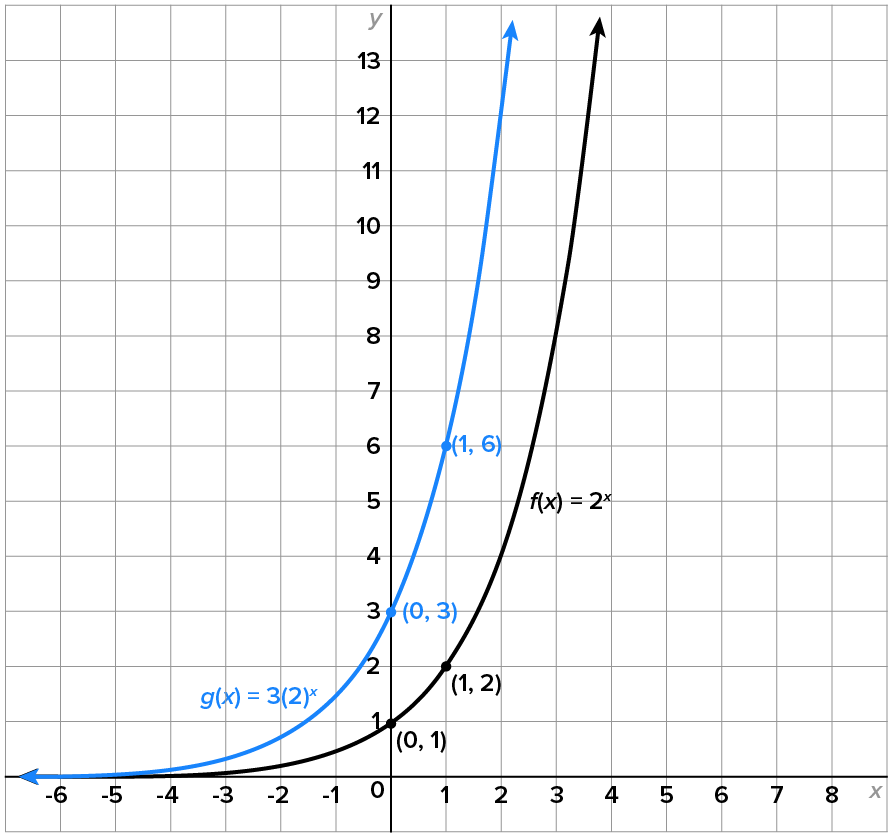
|
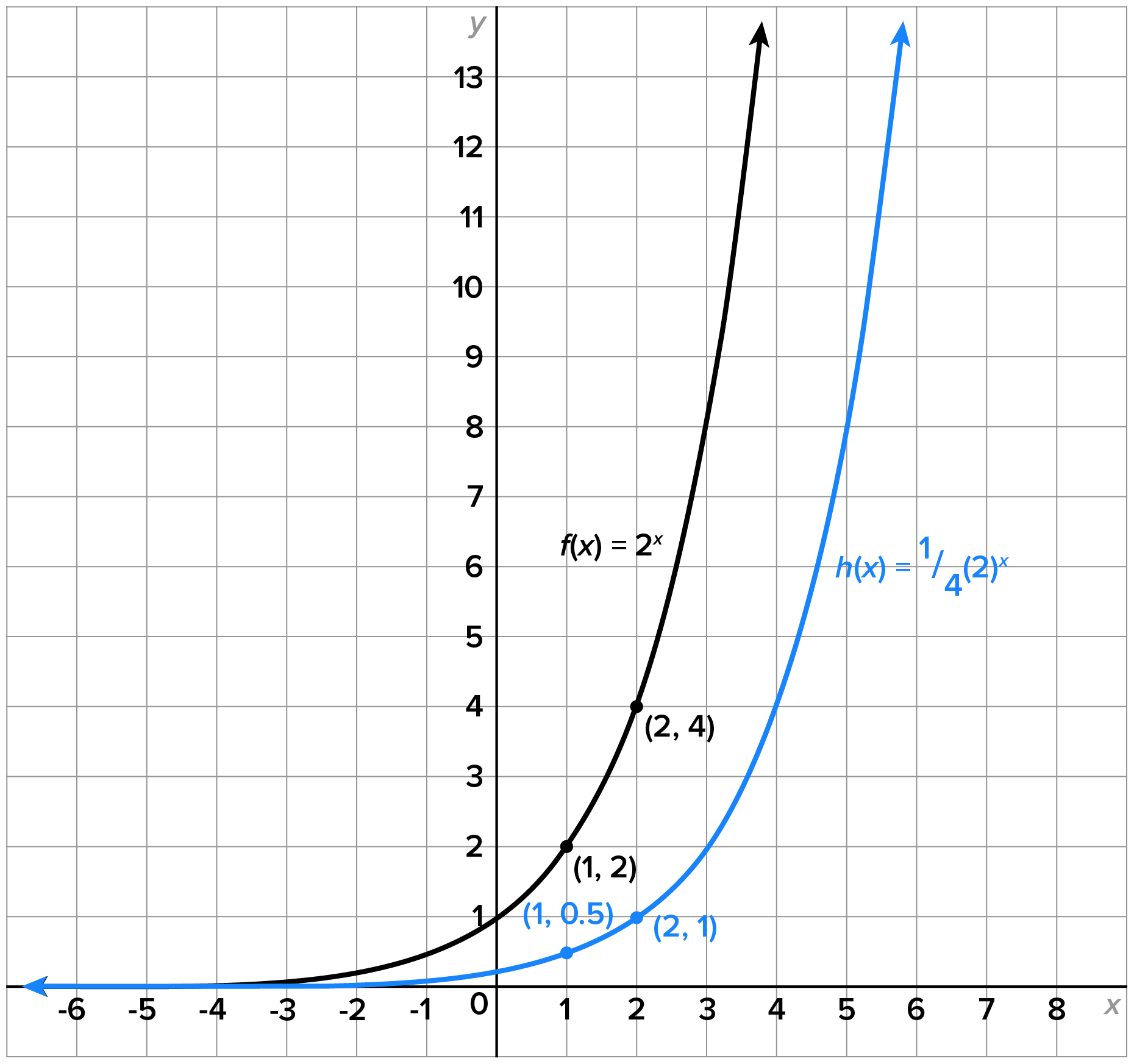
|
 and range
and range 

Given the graph of 
 is the reflection of the graph of
is the reflection of the graph of  across the x-axis.
across the x-axis.  is the reflection of the graph of
is the reflection of the graph of  across the y-axis.
across the y-axis.EXAMPLE
Consider the functions and
and  Since
Since  it follows that the graph of
it follows that the graph of  is obtained by reflecting the graph of
is obtained by reflecting the graph of  around the x-axis. Their graphs are shown below.
around the x-axis. Their graphs are shown below.
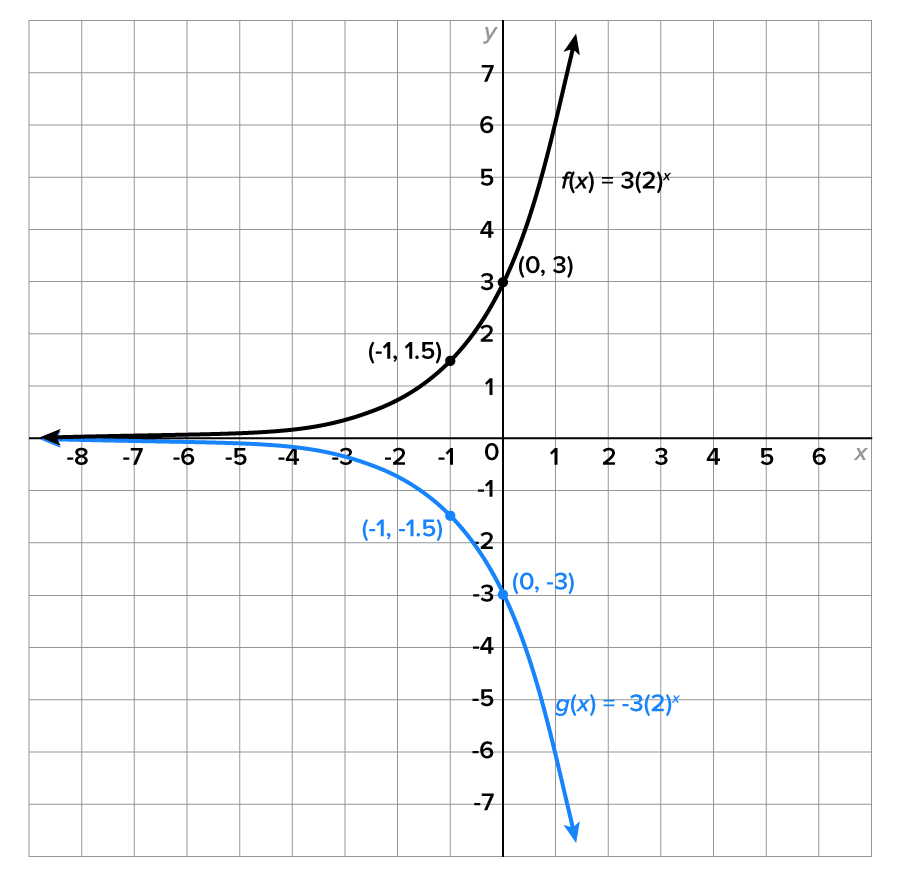
 However, take a closer look at the ranges of f and g:
However, take a closer look at the ranges of f and g:


 the aspects of these functions were discussed earlier.
the aspects of these functions were discussed earlier.
Here is an example which illustrates a reflection across the y-axis.
EXAMPLE
Consider the functions and
and  Since
Since  it follows that the graph of
it follows that the graph of  is obtained by reflecting the graph of
is obtained by reflecting the graph of  around the y-axis. Their graphs are shown below.
around the y-axis. Their graphs are shown below.

 and the ranges of both f and h are
and the ranges of both f and h are 
 can be rewritten using properties of exponents:
can be rewritten using properties of exponents:

Similar to what we did earlier in the course, a series of transformations can be applied to one function to create another function.
EXAMPLE
Consider the function in comparison with
in comparison with 

 which shifts the graph of f to the right 1 unit.
which shifts the graph of f to the right 1 unit. 
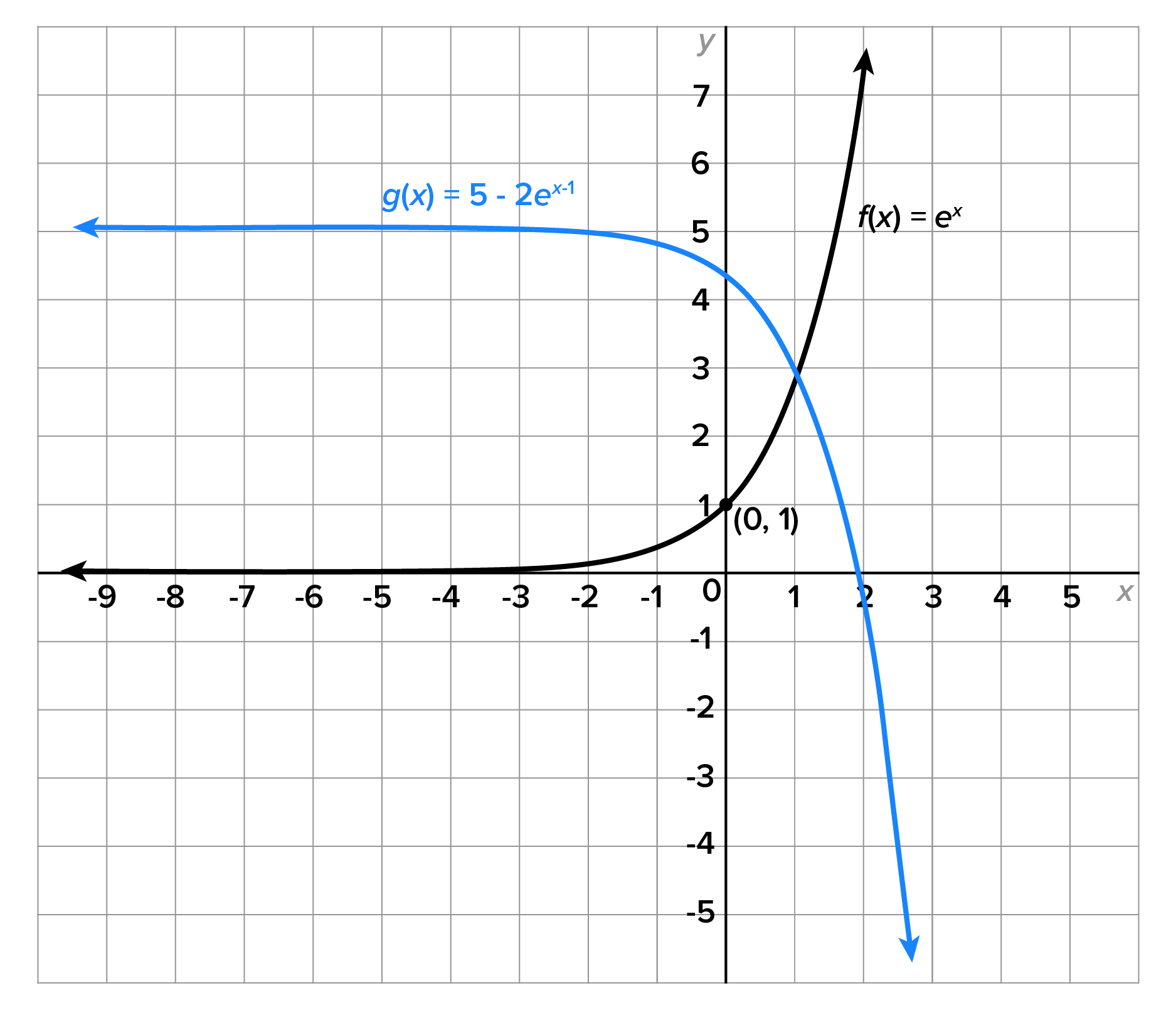

 to obtain the graph
to obtain the graph 
 and
and 
SOURCE: THIS TUTORIAL HAS BEEN ADAPTED FROM OPENSTAX "PRECALCULUS” BY JAY ABRAMSON. ACCESS FOR FREE AT OPENSTAX.ORG/DETAILS/BOOKS/PRECALCULUS-2E. LICENSE: CREATIVE COMMONS ATTRIBUTION 4.0 INTERNATIONAL.